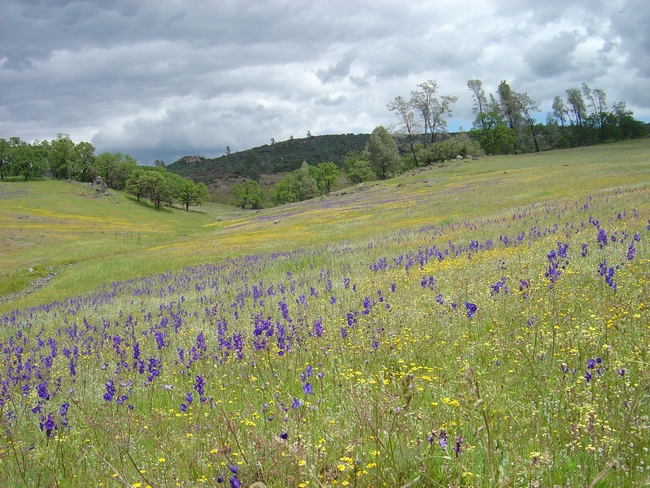Drought is impacting California’s wildflowers
Native wildflowers in California are losing species diversity after multiple years of drier winters, according to a study from the University of California, Davis, which provides the first direct evidence of climate change impacts in the state's grassland communities.
The study, covered in TIME, LA Times, and elsewhere, was published in the journal Proceedings of the National Academy of Sciences. It's based on 15 years of monitoring about 80 sampling plots at McLaughlin Reserve, part of UC Davis' Natural Reserve System.
"Our study shows that 15 years of warmer and drier winters are creating a direct loss of native wildflowers in some of California's grasslands,” said lead author Susan Harrison, a professor in the Department of Environmental Science and Policy and a member of UC Agriculture and Natural Resources' Conservation Biology workgroup. “Such diversity losses may foreshadow larger-scale extinctions, especially in regions that are becoming increasingly dry.”
The researchers confirmed that drought-intolerant species suffered the worst declines.
Global trend
Similar trends have been found in other Mediterranean environments, such as those of southern Europe, bolstering the case for increased climate change awareness in the world's semi-arid regions.
Taken together with climate change predictions, the future grassland communities of California are expected to be less productive, provide less nutrition to herbivores, and become more vulnerable to invasion by exotic species, the study said.
The researchers expect these negative to cascade up through the food web—affecting insects, seed-eating rodents, birds, deer and domesticated species like cattle, all of which rely on grasslands for food.
Rescue effect may be too late
Grasses and wildflowers may be able to withstand the current drying period through their extensive seed banks, which can lie dormant for decades waiting for the right conditions to germinate.
However, California's drought is expected to intensify in the coming decades, so this rescue effect may end up being too late for some species.
Author: Kat Kerlin



In the days when I was actively teaching a lecture/lab course in rangeland ecology in the (then)Agronomy Department at UC Davis I would routinely make field collections of native-annual clovers (Trifolium spp.), trefoils (Lotus spp.), and "burr clover" (Medicago sp.) from the wildlands of the 5,700-acre UC Sierra Field Station. In total, these collections would amount to about a dozen native-annual species.
I would take a large aluminum ice chest (with ice!), along with paper towels and small plastic bags. A collected plant sample would be wrapped in wet paper towels and placed in a plastic bag. When returned to Hunt Hall and kept in a cold room, then later used in a lab session, they were as fresh as if collected only minutes ago. Along with the plants I had developed an identification key, which students used to sharpen their knowledge of plant morphology as well as visual characteristics of individual species.
Over time (the late 1960s to the early 1980s)individual species dropped, one by one, from my collection list. In disturbed (aka "developed") areas of the Station, exotic invader annuals, e.g., "Medusahead", entered the mix, but the native species mentioned above had instead been collected along undisturbed roadsides along the long route from Hwy 20 to the Station, and from upper areas of the Station (the Koch & Lewis Fields)that had not experienced contemporary disturbances.
The current-attention fixation on climate-change influences on surviving-species diversity notwithstanding, shifts in botanical composition diversity of Sierran foothill annual rangeland have been occurring for decades.
To what extent these changes have resulted simply from climate change remains speculative, and the researchers should describe how they establish that a given plant species is "drought tolerant".
Over several decades of grazed annual-rangeland pasture management research, cooperative with the UC Davis Department of Animal Science, I have become convinced that such changes are uni-directional. Should El Nino bring an end to drought, and the "atmospheric rivers" of the "Pineapple Express return for good, the vanished species will not return.
Posted by Charles A Raguse on July 16, 2015 at 11:19 AM